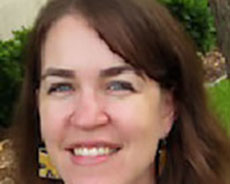
 “The Meaning of an Equestrian Center for Compton”
“The Meaning of an Equestrian Center for Compton”
Laura Barraclough, March 14th.
Late last month, the Los Angeles County Board of Supervisors approved an 18-year, $135 million plan to revamp Compton’s Magic Johnson Park. One piece of the proposed renovation, however—the addition of an equestrian center—got a little stinky.
Some nearby residents, it turns out, are less than enthusiastic about the flies, dust, and smells of manure that such a facility could bring. But there’s a bigger picture here that deserves consideration. Inclusion of an equestrian center in Magic Johnson Park will not only open up new horizons for local youth, it will also amend an unjust chapter in Los Angeles history.
Fifty years ago, in the early- and mid-1960s, residents of Los Angeles’s outlying suburbs worked closely with their elected officials to create legally protected horse-raising zones. These neighborhoods, most of which were located in the suburban San Fernando Valley, had been initially created in the 1920s and ‘30s for “gentleman farmers”—homebuyers enticed to raise chickens and plant citrus trees while working in the region’s major industries. In a classic L.A. real-estate story, boosters promised that suburban homeowners could enjoy “the best of both worlds”: the economic opportunities of the rapidly growing city alongside the peaceful, restorative life of the country. Crucially, however, those neighborhoods were resolutely white and economically exclusive. Racially restrictive covenants and alien land laws, upheld until 1948 and 1952, respectively, limited property ownership to white U.S. citizens, while large lot sizes protected by residential-agricultural zoning made these suburban farms off-limits to those without significant resources.
By the late 1950s, the historic coupling of racial and economic exclusion with a semi-rural lifestyle was coming undone. Rampant residential and industrial development, as well as population growth, pressured the owners of large properties to subdivide. So some homeowners turned to a new land-use weapon at their disposal: the horse-raising zone. This category, which was to be overlaid on top of existing residential zoning, mandated minimum lot sizes of 20,000 square feet (just less than a half-acre) and protected the ability to keep horses and other livestock on suburban lots.
Four horse-raising zones were ultimately created in the City of Los Angeles during the 1960s (in Shadow Hills, Lakeview Terrace, La Tuna Canyon, and Chatsworth); other municipalities in Los Angeles County, like Burbank, created their own around the same time. The City of L.A.’s community plans, which were completed during the late 1960s, further committed to protect the rural atmospheres of these neighborhoods, and various amendments over the years expanded the horse-keeping zones and increased minimum lot sizes in hilly areas.
The timing of these developments was crucial. During the 1960s and ‘70s, in response to fair housing laws and postwar economic gains by people of color, racially and economically exclusive neighborhoods throughout Los Angeles County began to integrate. Not so in the horse-raising zones. It wasn’t that the horse activists were explicitly racist—they weren’t—but that the new zoning dramatically increased property values and thereby made horse-keeping lots inaccessible to most people of color, who had been blocked from accruing significant home equity and credit by the discriminatory laws just repealed.
In Shadow Hills, for example, just one year after implementation of the zone in 1963, new homeowners paid $5,000 more for their properties than they would have paid elsewhere for comparably sized lots—this at a time when suburban properties in Los Angeles County cost between $25,000 and $30,000 on average. The city’s indefinite protection of the “rural atmosphere,” rooted in horse-keeping, is what made the difference, fusing together the historic relationships between whiteness and semi-rural land-use for another generation. Indeed, during the 1970s, the white population of Shadow Hills actually increased, even while other parts of the county were integrating.
Notably, neighborhoods elsewhere in L.A. County also had strong equestrian cultures during this period. For example, there was a very active chapter of Equestrian Trails, Inc., a recreational group, in Compton, where the renovated Johnson Park is located. But Compton, which was until the 1950s an exclusively white, working-class community located next to heavily African American neighborhoods in South L.A., was undergoing rapid racial transitions (and no small amount of racial violence) during this period. White homeowners there were not, by and large, concerned with protecting horse-keeping at that time; they were just trying to get out.
Compton nowadays is, of course, a substantially more diverse community, not only in terms of racial demographics (the city is majority African American and Latino), but also land-use. The site of the renovated Johnson Park, for example, used to be an oil storage facility, and the city as a whole still has significant industrial zoning. One of the few stables where cowboy culture thrived among the city’s black population was destroyed by fire in 2012. That horseback riding persists at all in Compton (and it does) is testament to the near-universal appeal of horses and the commitment of a handful of Black and Latino urban cowboys.
The inclusion of an equestrian center in Magic Johnson Park will not, by itself, reverse or even significantly alter historic patterns of racially unequal wealth and property ownership in Los Angeles. But it will signal that horse-keeping and horseback riding have both economic and cultural value. Equally important, it will communicate that city and county officials in Los Angeles are now protecting the rights and abilities of all people to enjoy those benefits.
